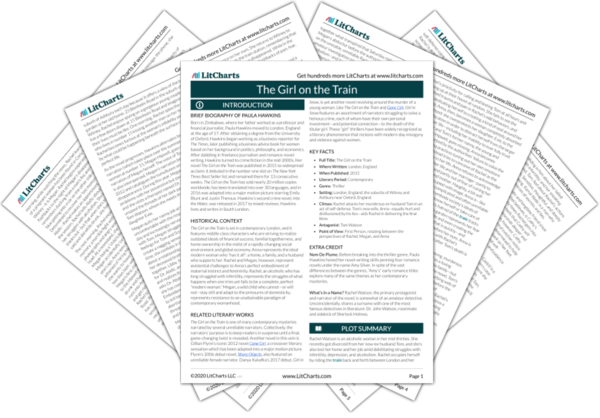AI ToolsNew
Tools to make learning and teaching easier
|
Previous
Megan: Four
|
The Girl on the Train: Rachel: Five Summary & Analysis |
Next
Anna: One
|


Upgrade to unlock the analysis and theme tracking for all of The Girl on the TrainThe Girl on the Train!
Get LitCharts A+